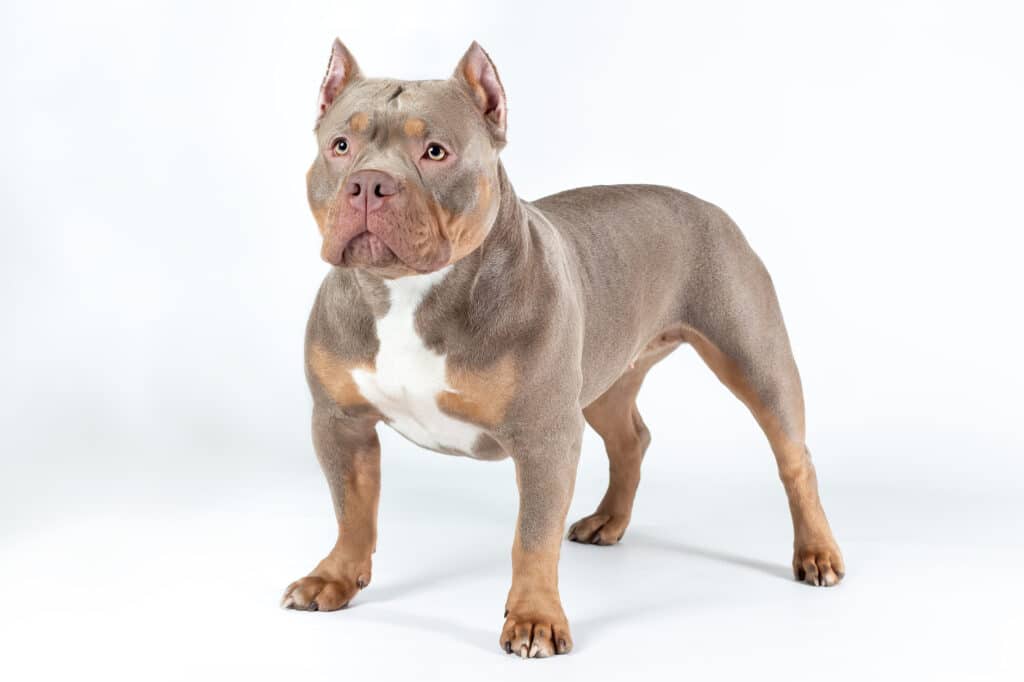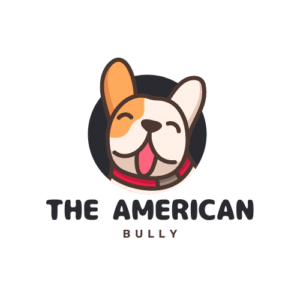
The American Bully is a breed that is known for its extreme muscle mass, short hair, and calm demeanor. However, this breed is also susceptible to several skin allergies.
Are you worried about your Bully’s skin allergies?
These skin conditions are the most common problems affecting your American Bully. With their genetic makeup, it’s not surprising that Bullies are prone to skin allergies like other dogs, such as pit bull terriers.
However, there are solutions to these problems. Knowing what to look for and how to treat your Bully’s skin allergies can help keep your pet healthy and comfortable.
Here are seven American Bully skin allergies and their solutions:
1. Atopic Dermatitis
It is the most common allergy in American Bullies. It’s also known as allergic inhalant dermatitis or atopy. Most American and pit bulls are affected by this condition at some point.
Symptoms
Atopic Dermatitis includes itchy skin, red or inflamed skin, scaly skin, and hair loss. An overreaction of the immune system causes this allergy to environmental allergens such as pollen, grass, dust mites, and mold spores. Bully breeds suffering from atopic Dermatitis typically have a history of allergies in their family.
Treatment
The best way to treat atopic Dermatitis is to avoid the allergens that trigger your Bully’s symptoms. It can be difficult, but keeping your home and yard as clean as possible is essential. Bathe your Bully regularly with a soothing, hypoallergenic shampoo. You may also need to use a topical corticosteroid or an immunomodulator medication prescribed by your veterinarian.
2. Food Allergies
Like humans, dogs can be allergic to certain foods. American Bullies’ most common food allergens are beef, chicken, soy, wheat, and corn. Food sensitivities on a dog’s food list can cause itchy skin, redness, hair loss, and hot spots.
Symptoms
Food allergies in American Bullies can cause itchy skin, red or inflamed skin, hair loss, diarrhea, and vomiting. If your Bully is allergic to a particular food, they will likely have these symptoms every time they eat it.
Treatment
The best way to treat a food allergy is to identify and remove the allergen from your Bully’s diet. It can be difficult, as many commercial dog foods contain common allergens. You may need to work with a veterinary nutritionist to find safe food for your Bully.
Once you’ve found a safe food, you’ll need to feed it to your Bully for at least 12 weeks to see if their symptoms improve.
3. Seasonal Allergies
Seasonal allergies, also known as pollen allergies, are caused by the same allergens that cause hay fever in humans. These allergens include pollen from trees, grasses, and weeds. Seasonal allergies can cause itchy skin, runny eyes, and sneezing in American Bullies.
Symptoms
The symptoms of seasonal allergies in American Bullies are similar to those in humans. They include constant itching, runny eyes, sneezing, and coughing. Dog’s skin may also become red or inflamed.
Treatment
The best way to treat seasonal allergies is to avoid the allergens that trigger your Bully’s symptoms. It can be difficult, but keeping your home and yard as clean as possible is essential. Bathe your Bully regularly with a soothing, hypoallergenic shampoo. You may also need to use a topical corticosteroid or an immunomodulator medication prescribed by your veterinarian.
4. Contact Dermatitis
An allergy causes contact dermatitis to something that comes into contact with your Bully’s skin. The most common allergens are chemicals found in shampoo, detergent, carpet cleaner, and other household products. Contact dermatitis can also be caused by poison ivy or oak plants.
Symptoms
Contact dermatitis includes itchy skin, red or inflamed skin, scaly skin, and hair loss. An immune system overreaction causes this allergy to environmental allergens such as pollen, grass, dust mites, and mold spores. Bully breeds and pit bulls suffering from contact dermatitis typically have a history of allergies in their family.
Treatment
The best way to treat contact dermatitis is to avoid allergic reactions using hypoallergenic shampoos and household products. You may also need to use a topical corticosteroid or an immunomodulator medication prescribed by your veterinarian.
5. Mold Allergies
Mold allergies are caused by a reaction to mold spores, which are found in both indoor and outdoor environments. Mold spores are released into the air when the mold is disturbed and can be inhaled into the lungs.
Symptoms
Symptoms of a mold allergy include sneezing, runny nose, congestion, itchy eyes, and skin rashes. Severe cases of mold allergies can cause difficulty breathing and anaphylactic shock.
Treatment
The best way to treat a mold allergy is to avoid exposure to mold spores. Keep your home clean and free of mold using a dehumidifier and air purifier. You may also need to use a topical corticosteroid or an immune-suppressing medication prescribed by your veterinarian.
6. Yeast Allergies
Yeast infections are caused by a reaction to the yeast found in indoor and outdoor environments. Yeast is a fungus found on the skin, in food, and the gut.
Symptoms
Yeast infections include itchy skin, dry skin, red or inflamed skin, scaly skin, and hair loss. Severe cases of yeast allergies can cause difficulty breathing and anaphylactic shock.
Treatment
The best way to treat a yeast allergy is to avoid exposure to yeast. Keep your home clean and free of mold using a dehumidifier and air purifier. You may also need to use a topical corticosteroid or an immune-suppressing medication prescribed by your veterinarian.
7. Fungal Infections
Fungal infections affect skin and nails. Ringworm, athlete’s foot, and candidiasis are fungal infections. Symptoms vary depending on the type of infection but can include redness, itching, scaling, and blistering.
Dog’s diet and bedding must be taken seriously to avoid fungal infections and skin issues on the dog’s coat.
American Bully breeds can react to the proteins found in pollen, grass, and dust mites. These allergens are usually found outdoors but can also be found indoors if there is a lot of dust or mold.
Symptoms
Symptoms of an allergy to pollen, grass, and dust mites include sneezing, runny nose, congestion, itchy eyes, irritated skin, and skin rashes. Severe cases of these allergies can cause difficulty breathing.
Treatment
The best way to treat an allergy to pollen, grass, and dust mites is to avoid exposure to these allergens. Keep your home clean and free of dust and mold using a dehumidifier and air purifier. You may also need to use a topical corticosteroid or an immune-suppressing medication prescribed by your veterinarian.
Allergies cause most bullies and pit bull skin problems. American Bully breeds can be allergic to pollen, grass, dust mites, mold spores, yeast, and fungal infections.
What to do if your dog has an allergic reaction?
If your American Bully has an allergic reaction, you want to consider the following :
Steps to Take if Your Bully is Having an Allergic Reaction
1. Remove the allergen if possible
Bullies and pit bulls’ skin are sensitive, so you want to remove the allergen if possible. If your dog is allergic to pollen, try to keep him indoors on days when the pollen count is high. If he’s allergic to dust mites, vacuum regularly and use air purifiers in your home.
2. Give your dog a cool bath
If your dog is itchy, a cool bath can help soothe his skin. Use a mild, hypoallergenic shampoo and avoid using conditioner, which can irritate the skin. After the bath, apply a soothing lotion or cream to your dog’s coat.
3. Apply a hypoallergenic cream or lotion
Many hypoallergenic creams and lotions on the market can help relieve itching and irritation. Read the label carefully to ensure the product is safe for dogs and follow the directions.
4. Give your dog an antihistamine
If your dog is still itching, you may want to give him an antihistamine. Check with your veterinarian first, and never share your dog’s over-the-counter medication without checking with your vet.
5. Consider a topical corticosteroid
If the above treatments don’t work, your vet may prescribe a topical corticosteroid. This potent medication should only be used as directed by your veterinarian. Some bullies and Pit-bull skin issues may require long-term treatment with steroids, so follow your vet’s instructions.
6. Change your dog’s diet
If your dog still has skin problems, you may want to consider changing his diet. Many hypoallergenic dog foods on the market can help relieve allergies. Be sure to talk to your vet before changing your dog’s diet.
The above are just a few things you can do if your American Bully has an allergic reaction. If you have any concerns, be sure to check with your veterinarian.
You should take your American Bully to the vet if the allergic reaction is severe. Anaphylactic shock is a medical emergency that can endanger a dog’s life if not treated immediately.
Here are a few tips to help you prevent allergies in your American Bully :
- Keep your home clean and free of dust and mold. Use a dehumidifier and air purifier.
- Vacuum regularly and use hypoallergenic bedding.
- Wash your dog’s bedding in hot water weekly.
- Give your dog a cool bath with hypoallergenic shampoo, and avoid using conditioner.
- Apply a hypoallergenic cream or lotion to your dog’s coat.
- Change your dog’s diet to hypoallergenic food.
- Check with your veterinarian if you have any concerns.
Following these tips can help prevent allergies in your American Bully. Check with your vet if you think your dog may be allergic to something.
FAQs about Allergies in American Bullies
Q: Can American Bullies be allergic to food?
A: Yes, American Bullies can be allergic to food. If you think your dog may have a food allergy, talk to your vet about switching to a hypoallergenic diet.
Q: What are some signs that my American Bully has an allergic reaction?
A: Some signs that your American Bully has an allergic reaction include itching, redness, swelling, hives, difficulty breathing, and vomiting. If you see any of these signs, take your dog to the vet immediately.
Q: Can allergies be cured?
A: No, allergies cannot be cured. However, many treatments available can help relieve the symptoms of allergies.
Q: How can I prevent my American Bully from an allergic reaction?
A: The best way to prevent your American Bully from having an allergic reaction is to avoid exposure to allergens. If you know your dog is allergic to pollen, try to keep him indoors on days when the pollen count is high. If it is allergic to dust mites, vacuum regularly and use air purifiers in your home.
Final Thoughts
Allergies are a common problem among American Bullies. However, there are many treatments available that can help relieve the symptoms. If you think your dog has an allergy, talk to your vet about the best course of treatment.
We hope you found this article helpful. If you have any questions or comments, please feel free to leave them below. Thanks for reading!
Do you have an American Bully with allergies? What treatments have you found to be effective? Let us know in the comments below!

